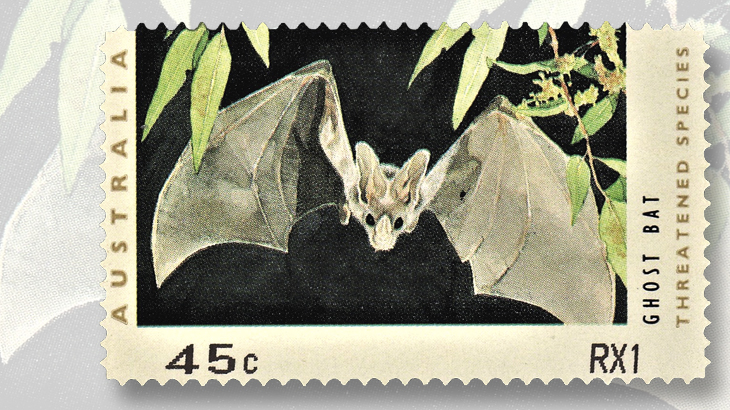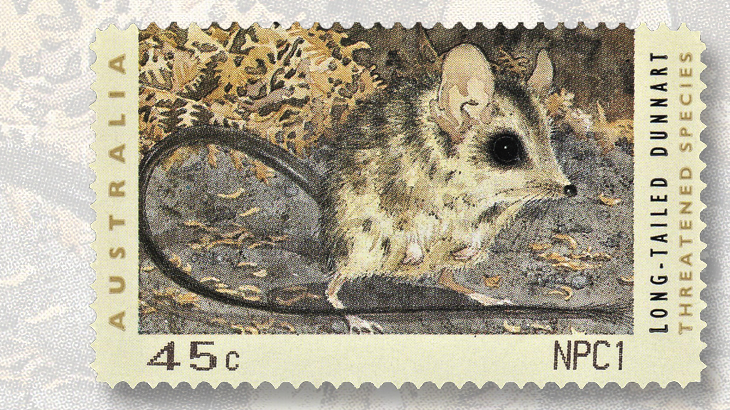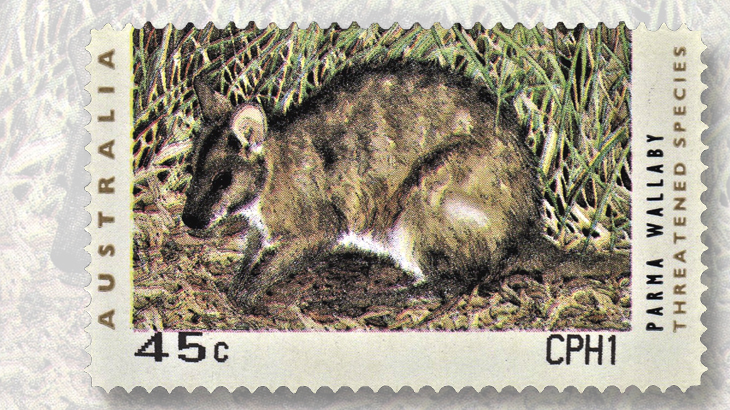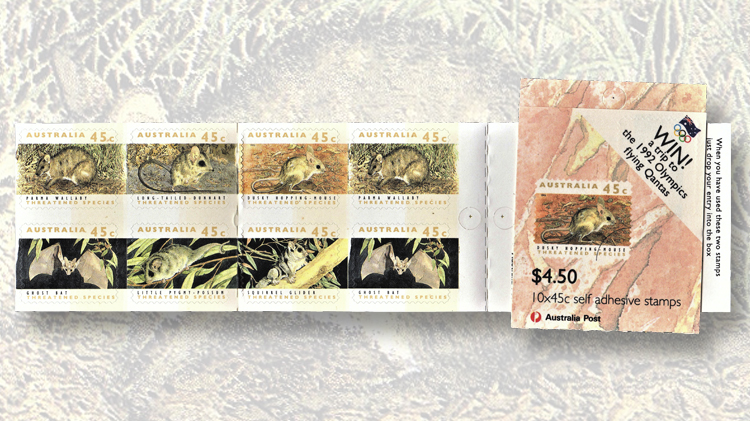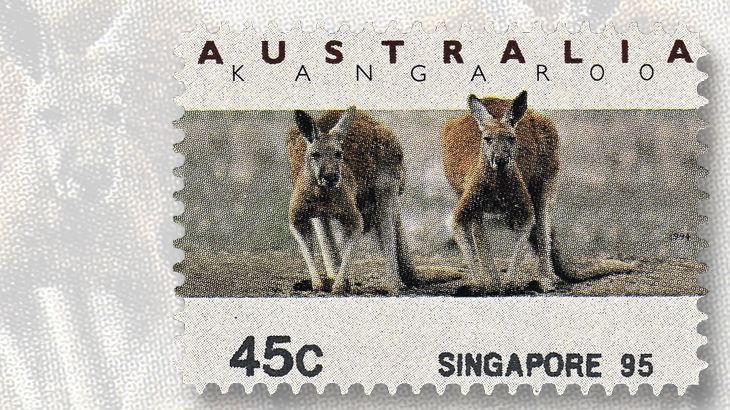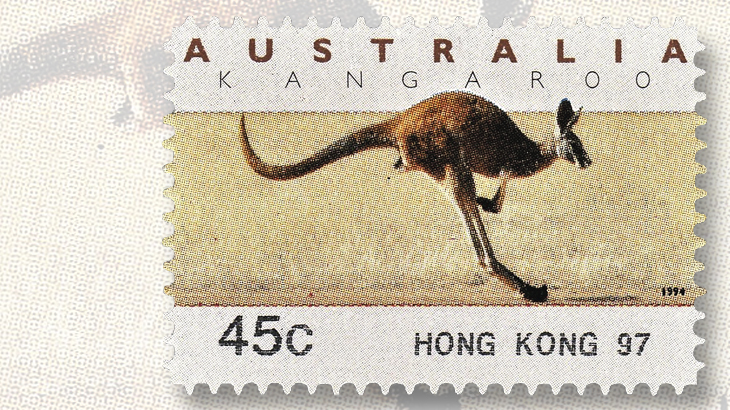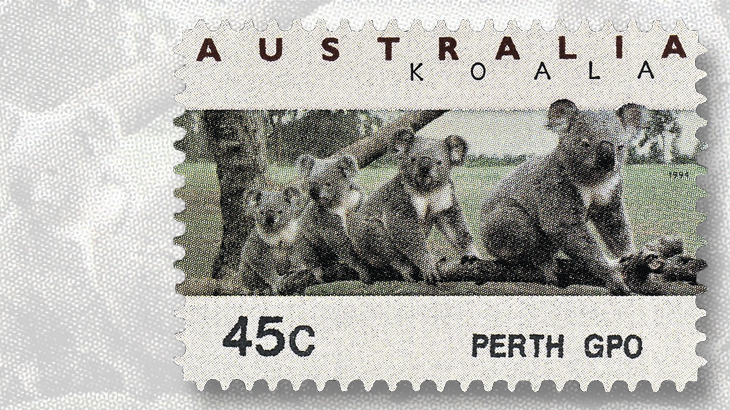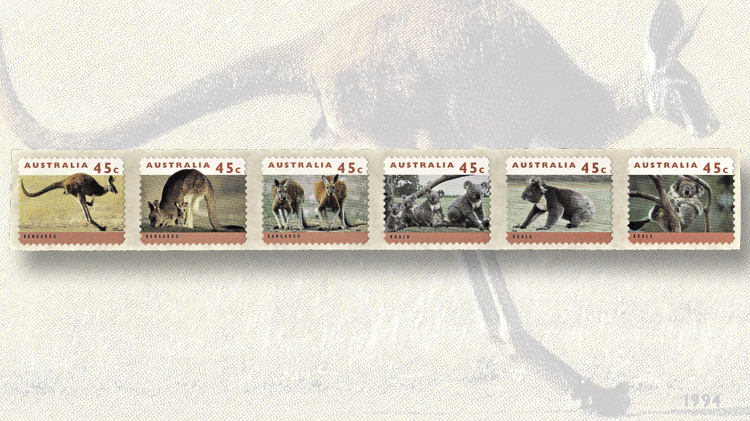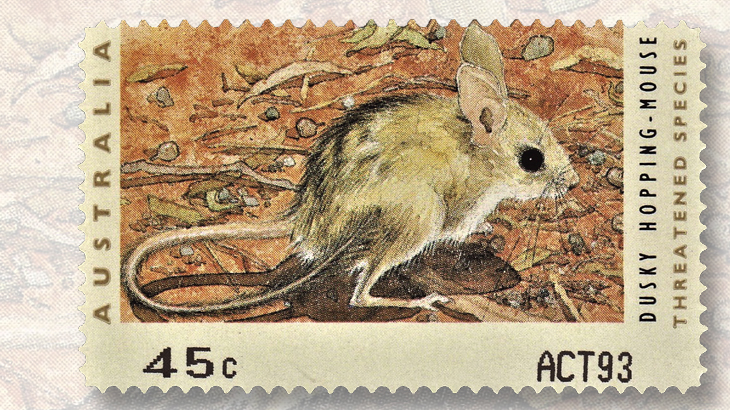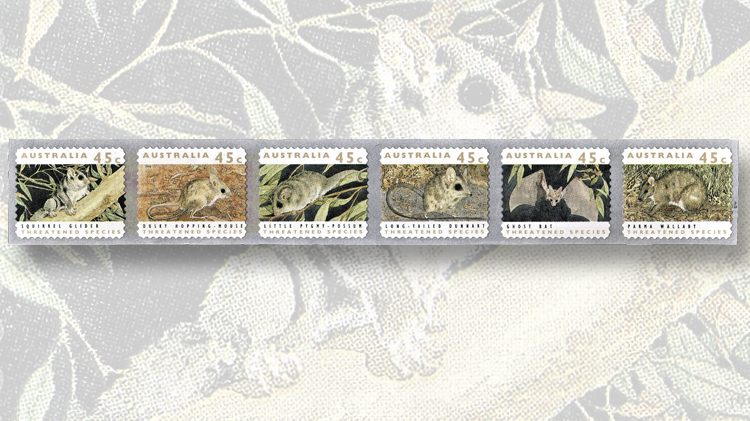World Stamps
Australia’s stamps produced at postal counters are very collectible
Stamps Down Under — By Janet Klug
In 1990, Australia began issuing self-adhesive stamps, also known as pressure-sensitive stamps. Subsequently, in 1992, Australia Post pictured threatened Australian wildlife species on a strip of six self-adhesive stamps: Parma wallaby (Scott 1241), ghost bat (1242), long-tailed dunnart (1243), little pygmy possum (1244), dusky hopping mouse (1245), and squirrel glider (1246).
The strip of all six threatened species (Scott 1246d) is nice to have, but there are more collecting possibilities.
Connect with Linn’s Stamp News:
Sign up for our newsletter
Like us on Facebook
Follow us on Twitter
These same at-risk Aussie animals also found themselves on booklet panes (Scott 1246b) and small panes of five (1246c).
Then something brand new came along in 1993: counter-printed stamps. The stamps in this new format were dispensed from a postal counter machine developed by Tritech Pty., Ltd., in Melbourne. Some alterations were made in designs of the threatened species stamps for use in the counter machine.
The images of the animals were enlarged, and a blank strip at the bottom of each stamp was overprinted by a dot-matrix printer within the machine. The printed denomination was 45¢ at the time.
Also, the bottom-right corner of the counter-printed stamps was overprinted with letters and numerals to denote where the stamps were made.
For example, “NPC1” was used from June 21, 1993, at the National Philatelic Center.
An “ACT93” marking indicates that the stamp was made Oct. 23-24, 1993, by a counter printer at the National Conference for Post Office Agents and Licensees.
“RX1” denotes the counter printer at the Sydney Royal Exchange Australia Post Shop, and “CPH1” is the marking from the counter printer operating at Canberra Parliament House beginning Dec. 20, 1993.
“PERTH GPO” refers to the general post office in Perth.
Each self-adhesive stamp was prepared on backing paper with a black square on the reverse. This square marking enabled the machine to electronically align the stamp correctly for printing and cutting.
More Threatened Species stamps were issued as self-adhesives in June 1994 using six images of koalas and kangaroos by graphic-designer Janet Boschen. They include a kangaroo (Scott 1288), kangaroo with joey (1289), two kangaroos (1290), four koalas (1291), koala on ground (1292), and koala in tree (1293).
These designs, too, were made into counter-printed stamps, this time in a larger size overall but again denominated 45¢.
Some marginal overprints on counter-printed stamps were references to special events, such as the “SINGAPORE 95” and “HONG KONG 97” international stamp expositions, where Australia Post operated postal counters.
Australia’s counter-printed stamps were not well-accepted, so finding them on cover is not easy. Nevertheless, they are interesting examples of a new type of postal technology and, as such, are quite collectible, as well as being attractive images of some of Australia’s endangered animals.
MORE RELATED ARTICLES
Headlines
-
US Stamps
Oct 7, 2024, 12 PMVasiliauskas named president of Mystic Stamp Co.
-
US Stamps
Oct 6, 2024, 5 PMApgar souvenir card available
-
US Stamps
Oct 6, 2024, 4 PMFirst Continental Congress and U.N. stamps receive Scott catalog numbers
-
World Stamps
Oct 5, 2024, 1 PMCanada Post continues Truth and Reconciliation series
